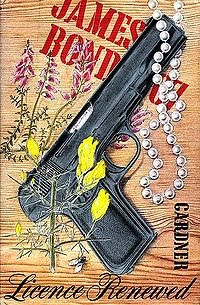by Ben Roberts
This book review can also be found at our sibling site Balanced Sports.
Followers of the recent Ashes series who sought statistics, analysis, and opinion from ESPN's Cricinfo website would no doubt have come across Christian Ryan's blog, 'My Funeral, Your Ashes'. I had never previously come across Ryan until this summer, and knew nothing of his background. Certainly he cannot be said to ever temper his opinion. But unlike most modern media outlets Ryan paints a very detailed picture first, bringing the reader first into position of understanding, before the sting comes. Less like a brawling bulldog, more a brooding viper.
The combination of my own unfamiliarity of Ryan's work, the struggling of Australian cricketers and the euphoria of the English, led me to believe initially that Ryan was indeed a native of the mother country himself. I was wrong, Ryan is an antipodean. Like Kim Hughes however, Ryan is from a state who's people hold a constant level of distrust of all things originating east of Eucla; Western Australia.
These feelings of distrust, envy, and frustration are where Ryan seeks to build this work from; WA having always perceived it has received a raw deal from eastern state cricketing administrations. Ryan indicates that although abolished in the late 1960s, the travel levy that the eastern states required WA to pay for every game in WA was a source of anger that burned within every cricket club and every cricketer in Australia's largest state, young and old.
Beyond the institutional politicking between state associations came something even more fervent, maybe destructive. For a cricket fan it is that moment of lost innocence when one recognises that despite players representing the same country, they can be nowhere near best of friends. Based upon his analysis, Ryan believes that the effect Greg Chappell, Dennis Lillee, and Rodney Marsh had on Australian cricket was far beyond what they provided on the pitch. Add to this the non-playing influences of Ian Chappell, Kerry Packer, Austin Robertson and John Cornell in the mid-1970s and it is easy to understand why others may have felt suffocated.
In the middle, or more trying to glide over the top, was a exciting yet flighty batsman in Kim Hughes. Remembered by many as much courteous and polite as a man as he was impetuous as a batsman, Hughes still to this day seeks to rise above the need to engage in public comment on the issues that plagued his career. Despite repeated attempts of Ryan to engage Hughes for the book, he was always politely declined.
Kim Hughes' career is presented by Ryan as one of a man constantly trying to keep his head above an increasingly pressurised position as Australian captain, but even just initially as a WA team mate. It is continually clear, despite Hughes non-assistance in this work, that at the time, and even more so as years have passed that Hughes holds little resentment about his tumultuous time at the top. Whether Ryan has accurately captured the behind closed doors conversations and interactions that have occurred will always be a matter of opinion, opinions that will become more jaded with age. What cannot be argued, and Ryan is clear to state, is that certain protagonists of Hughes' fall publicly made comment on television and in print regarding Hughes.
Previously to this writer, who was barely alive when Allan Border assumed the captaincy of the Australian cricket team, Hughes had appeared to be an uncommon failure in the list of Australian captains. That an Australian would even think of renouncing the apparent greatest job in the world was just ludicrous, and a completely English approach. The pictures of Hughes in tears at the Gabba would never instil a sense of national pride. Ryan's work here though opens up this man and the surrounding cricketing culture to scrutiny of the kind that is unseen in most Australian cricketing media. To the public reliant on Channel 9 solely for their interpretation, one might even remain in the belief that all the Australians are best friends and spend their social time devouring buckets of a fried chicken product.

Writers such as Ryan, including the likes of Frith, Haigh, and Roebuck, never will obtain the universal approval of all. Their work is more valuable for it. But with Australian cricket currently facing a key juncture in the sports modern history it would no doubt be worth viewing the game as these gentlemen tend too. What are the purposes of anointing captains early in a career; how should we best support the captains during the tougher times; what effects are brought to bear on dressing rooms during and after the careers of high profile (and maintenance) superstars?
Golden Boy: Kim Hughes and the Bad Old Days of Australian Cricket, scores footballs.
Image courtesy: http://www.bookoffers.com.au
 Elmore Leonard writes crime thrillers like no-one's business. It's what he does. You may not have read him, but you'd know his works: Get Shorty, Be Cool, Out of Sight, Jackie Brown and 3:10 to Yuma are all films adapted from his works. And now at 85 he hasn't eased into retirement but maintained a keen ear for the patois that sharps, shylocks, grifters and bad guys use. Riding the Rap (though published before Out of Sight) only confirms his reputation from prior works: the man can tell a story.
Elmore Leonard writes crime thrillers like no-one's business. It's what he does. You may not have read him, but you'd know his works: Get Shorty, Be Cool, Out of Sight, Jackie Brown and 3:10 to Yuma are all films adapted from his works. And now at 85 he hasn't eased into retirement but maintained a keen ear for the patois that sharps, shylocks, grifters and bad guys use. Riding the Rap (though published before Out of Sight) only confirms his reputation from prior works: the man can tell a story.








